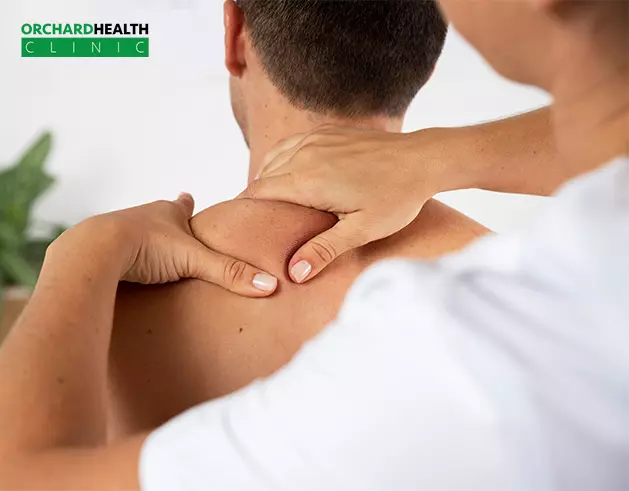What is Scoliosis?
Scoliosis is a spinal condition that affects the curvature of the spine. Those with this condition have curves that cause their spines to bend from side to side in an unnatural “C” or “S” shape. While scoliosis is often found in adolescents, it is possible for adults in Singapore to develop this condition too.
Adult scoliosis can be caused by various factors, such as aging, degenerative changes, or a previous injury. Many with this condition may develop pain and discomfort in their backs, thus impacting their quality of life. Fortunately, adult scoliosis is treatable. Let us share how you can manage this condition effectively.
Why does Scoliosis develop in adulthood?
Adult scoliosis can be hereditary or the result of past trauma. However, the primary cause of this condition is often due to degenerative changes in our spines as we age. These changes can cause our spinal discs to lose their ability to absorb shock, leading to the compression of spinal nerves. As a result, adult scoliosis is more common in advanced age. For some patients, the deformity can worsen and develop into spinal stenosis where their nerves begin to get pinched. Management of such conditions may involve working with a chiropractor in Singapore to address alignment issues and provide supportive care.
Types and causes of Scoliosis pain

Adults with idiopathic scoliosis usually display more symptoms than adolescents, as the degeneration in their joints and discs causes spinal nerve openings to narrow. The discoordination of their spinal muscle firing patterns also leaves some muscle groups doing more work than others. As a result, adult patients often experience dull, achy, cramping spasms.
Common types of adult Scoliosis pain
1. Joint inflammation
As those with adult scoliosis age, they typically develop “joint slipping” in their spines (spondylosis). This occurrence is prevalent in patients whose conditions go untreated. When this happens, their joints become inflamed, the cartilage cushioning the disks may thin, and bone spurs may develop. If the disk continues degenerating or the curvature in their spine progresses to the point where the spinal vertebrae begin pressing on their nerves, they may experience severe pain.
Those with joint inflammation caused by scoliosis often experience stiffness and pain when they wake up in the morning, as well as later in the day. The pain is usually localised to a specific area of the joint. They may also encounter activity-related pain that progressively worsens over time.
2. Mechanical pain
Those with adult scoliosis often lean forward because their spines have lost their natural curve or in an attempt to alleviate pressure on affected nerves. This action results in poor posture, which places tremendous stress on the muscles surrounding their spines. As a result, they experience achy, dull, and burning spasms, along with stiffness in their lower back, and fatigue from the strain placed on their lower back and leg muscles.
3. Nerve pain
As the spine continues degenerating and adult scoliosis deformity worsen, additional pressure may be placed on the patient’s nerves and even the entire spinal cord, causing their nerves to compress. When this happens, they may experience pain, weakness, and numbness in their lower back.
How to manage adult Scoliosis
Fortunately, adult scoliosis is treatable. So you do not have to worry about suffering in silence. Our therapists at Orchard Health Clinic can assess your condition and develop a unique, customised treatment plan tailored to your needs to reduce curvature, improve functionality, and relieve scoliosis pain. Usually, the treatment plan entails tackling the root cause of the problem, combining various approaches for maximum effect. Let us share what to expect from your treatment.
1. Rest

The back pain caused by scoliosis often triggers when you overexert yourself physically. In these instances, rest is the best medicine. Therefore, our therapists will recommend taking 30 to 60 minutes breaks from your activities to relax in a reclined or prone position to avoid exacerbating the pain.
Resting in this position provides adequate support to your lower back and neck. You can also consider placing a pillow under your lower back to support the natural curve of your spine, further reducing back pain. The break also helps reduce inflammation and allows your muscles to relax.
2. Manual adjustments

Our therapists may recommend spinal manipulation to improve the alignment of your spine and reduce nerve irritation, thus improving your range of motion. These adjustments also help minimise the stress and tension on the spine caused by scoliosis, thus alleviating pain and stiffness in your lower back.
3. Physical activity

Physical activity can strengthen your back muscles, thus helping to reduce scoliosis pain and improve your overall quality of life. Our therapists will recommend appropriate exercises, like yoga and plank exercises, to enhance your core muscles, such as your abdominal and back muscles, to improve your flexibility and reduce pain.
4. Cryotherapy

If your scoliosis pain is causing you severe discomfort, our therapists may recommend cryotherapy to help reduce the inflammation in the affected area. The treatment also improves blood flow and promotes faster healing, thus alleviating the pain. Moreover, the cold temperature functions as a temporary anaesthetic, blocking the pain signals and minimising the discomfort.
Learn More: What Is Cryotherapy?
No one should have to suffer from debilitating back pain caused by scoliosis. At Orchard Health Clinic, we take a holistic approach to care for scoliosis back pain. We can evaluate the extent of your spinal curvature and recommend the most suitable treatment to manage your condition. Do not hesitate to contact us to schedule a consultation with our therapists today.
Exploring Care Options for Adult Scoliosis
If you are managing symptoms related to adult scoliosis, professional guidance may help in addressing discomfort and maintaining mobility. An evaluation can help determine the most appropriate approach based on your condition and lifestyle needs. For more information, visit our chiropractic clinic in Singapore.






